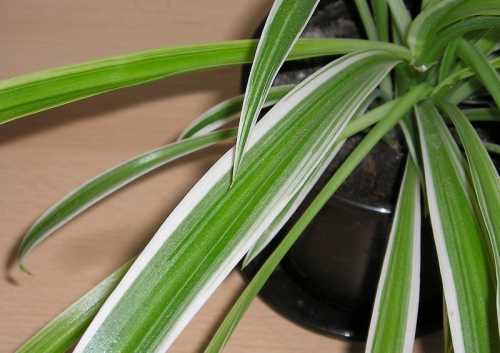Spider plants are one of the most looked after plants when it comes to choosing flexible and forgiving houseplants. They add aesthetics and unique greenery to your living room or your backyard and do not demand much in return.
However, if you are a newbie or do not know much about spider plants, certain doubts may arise time and again. “How often do you water a spider plant” is one of the many doubts faced by people growing spider plants in their premises.
If you are one such person, we have got your back! In the following article, we would discuss everything about watering spider plants, keeping them indoors, taking care of them in day to day situations, and much more! Without further ado, let us begin.
How Often to Water Spider Plant Indoors: Do’s & Don’ts

If you have decided to plant spider plants in your house, all by yourself, and you do not have a green thumb, do not worry. The watering requirements of spider plants are different from other houseplants, but at the same time, they give you plenty of room to get back on the right track, that is, if you witness the problem within the right time, of course!
Before we begin to answer the often part of the question, it is important for all our readers to know that one should never water their houseplants according to a fixed schedule. That being said, Spider plants are no exception.
Watering spider plants by keeping a fixed schedule can only contribute to its deteriorating rate. In fact, the plant might backfire in the form of a visible root rot, plant decay, or soggy soil, making it difficult for the plant to survive in such harsh conditions.
Also Read: How Often to Water the Chinese Evergreen (Aglaonema)?
To begin with, there is no single answer to how often you should water your spider plant. It can only be calculated by doing a finger test. A finger test involves the person inserting the finger into the bed of soil or potting mixture in which the plant is kept. Post this, if the finger has no soil stuck to it, that means the soil is arid and requires water.
However, for regular houseplants, only the initial 25% of the layer is measured, but for spider plants, one should consider the top 50% of the soil before reaching any conclusion. On the other hand, if your finger has visible soil stuck to it that feels wet, do not water your plant for at least another week.
If you want to skip the finger test, you can opt for the once in a week method. As the name suggests, this method involves you watering spider plants once each week.
Remember, this is still not a fixed schedule and since spider plants are thirsty, overwatering is not an issue with them. But, this should not be followed with other houseplants.
If you mess with the watering patterns of your spider plant, you are directly messing up with its nutrient intake, which can be a serious health issue for the plant.
Overwatering Spider Plants
While the plant is thirsty and forgives you in case of overwatering, this can only be done once. If you keep overwatering your spider plant, you might end up killing it, or at the very least, pushing it to that direction. The good news is, the plant lets you know if it has been overwatered.
Some spider plant symptoms are visible when the plant is overwatered. They include changing the colour of the leaves to brown and dying leaves one after the other. You can ensure a proper drainage system in and around your plant to help avoid the situation of root rotting and soggy soil.
Including peat moss in the potting mixture, choosing a good drainage soil, making holes in the plant container, keeping an extra container for collecting water are some of these good draining practices. Additionally, if you let the soil dry at its own pace, you can see the plant recover in a few weeks time.
Also Read: How Often to Water the String of Pearls?
Underwatering Spider Plants
Keeping your spider plant deprived of water can cause more damage than overwatering would ever do.
This is because the spider plants have a thirsty nature and water is what they require for surviving. Fading colour of leaves or whitening of leaves are the symptoms that tell you that the plant is essentially deprived of water.
If you cannot make out whether or not the plant is underwatered, you can check the leaves closely and see if they are folding across their length. If they do, water the plant generously and wait for 3-4 days for the leaves to recover.
Spider Plant Care Tips
Besides watering them right, one should also pay attention to taking general care of their spider plants at all times, to ensure that their healthy nature sustains for long. Here are some of the tips that not many people know:
Spider plants would usually survive in low light, but they thrive only in bright indirect light conditions. Exposing them to direct light can burn their leaves, making them brown at the edges, and impacting their overall growth negatively. If you are placing your spider plants indoors, it is ideal that you put them near a window that is not facing south.
Unlike other plants, and as mentioned above, spider plants require lesser quantities of water to reach their optimum growth standard. While other plants should be watered when the top 25% soil is arid, spider plants require us to wait till the top 50% of soil gets dry. This is important to remember as too much water can make the roots rot and the soil soggy, unsupportive of new growth.
Misting spider plants regularly is an important consideration due to the humidity levels spider plants need. While they generally do well in no humidity conditions, and should be ideally kept that way, exposing them to little humid environments every now and then proves to be an essential and lesser known ingredient for their growth. Additionally, if the tip of your leaves start turning brown, it directs to the fact that the surrounding air is extremely dry, and the plant cannot tolerate it. Making use of a dehumidifier or a humidifier and regulating their levels is also recommended to control humidity.
There is no standard temperature range to keep spider plants. The temperatures they prefer keep changing according to the part of the day in which they survive. But again, this is very similar to usual temperature levels of day and night. During the day and late afternoons, spider plants prefer to thrive in temperatures ranging from 60 to 80 degrees fahrenheit, while it drops down to 55 degrees fahrenheit at night. One might not have to make special arrangements to meet the temperature requirements of spider plants.
If you are keeping your spider plants inside, feed them properly with an ideal liquid fertilizer that is water soluble and not too strong on the plants. When we mention ‘properly’, we refer to feeding them only once during spring or summer season. Avoid fertilizing your pants in winters, when the plant is at a dormant stage and not ready to grow further. On the other hand, if you place your spider plants outdoors, you can double the dose of fertilizer that you provide to your plants.
Also Read: Why Prayer Plant Leaves Turning Yellow?
Spider plants, unlike their name, are not something to be afraid of. They are non-toxic to the use of pets or humans, so you can remain satisfied with your dogs or cats roaming around them freely.
If you want to grow a new spider plant of your own, you can do that by trimming off the spiderettes which are new and small growths in the plant. If propagated according to a specific procedure, you can nurture new spider plants from these little offshoots in a small time.
If you see a new little growth on the leaves of the spider plant, detach it from the mother plant, place it in a glass of water (not upto the brim) and witness the plant growing. The earliest signs of growth should be visible in the first 2 weeks when the roots start growing.
Wait till 4 weeks for the roots to sprout. If they don’t try looking for loopholes in your method of propagation. If they sprout roots, replace the glass of water with a thin bed of soil, and let it thrive.
Conclusion
If you take care of the aforementioned tips and water your spider plants rightly, you will be rewarded by little spider plant sprouts in your backyard in no time. As forgiving as the nature of this plant is, it tends to get a bit difficult to take proper care of it sometimes. But, with a little care and maintenance, they are sure to bounce back to normalcy in no time.
